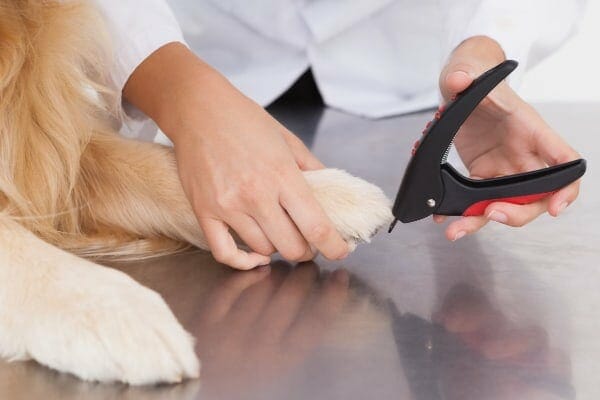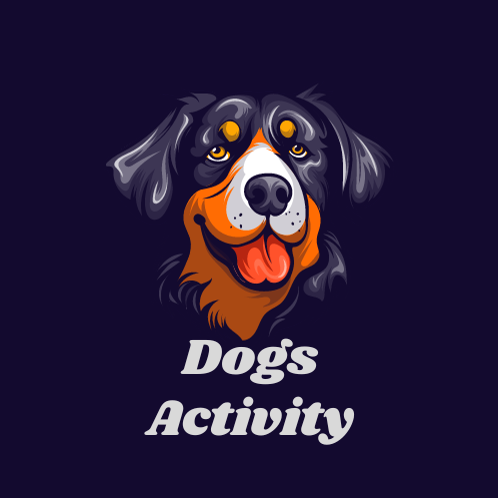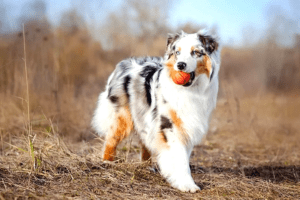
Introduction:
Maintaining your furry companion’s nails at an optimal length is a fundamental aspect of responsible pet ownership. However, confronting overgrown dog nails presents a common challenge for many pet owners. The fear of causing discomfort or injury to their dogs often prevents them from performing necessary nail care. This comprehensive guide aims to offer detailed insights into effectively managing overgrown dog nails, employing the use of dog nail clippers, and considering sedation as a viable option for anxious or distressed dogs during nail trimming.
Understanding Overgrown Dog Nails:
The occurrence of overgrown dog nails is influenced by several factors. Understanding these causes is vital in preventing the issue:
- Lack of Regular Trimming: Failure to maintain a consistent nail trimming schedule results in nails growing longer than necessary.
- Limited Physical Activity: Dogs that do not engage in sufficient exercise may not naturally wear down their nails, leading to overgrowth.
- Anxiety or Discomfort: Some dogs may exhibit anxiety or discomfort during nail trimming sessions, causing pet owners to avoid the process altogether.
The ramifications of overgrown nails for dogs can be significant, leading to discomfort, pain, or potential health complications. Long nails can alter the dog’s gait, cause joint issues, and even lead to infections. Hence, prompt and appropriate attention to overgrown nails is crucial for your pet’s well-being.
Sedating a Dog to Cut Nails:
For dogs exhibiting extreme distress or anxiety during nail trimming, sedation might be a consideration. However, this approach should be approached cautiously and preferably under the guidance of a veterinarian. Sedating a dog for nail trimming should only be considered as a last resort when other techniques have failed or if the dog’s anxiety is severe.
- Consultation with a Veterinarian: Seek professional advice from a veterinarian before administering any sedatives to your dog. The vet will evaluate your dog’s health, size, breed, and anxiety levels to recommend the most suitable sedation method and dosage.
- Selecting the Right Sedative: Veterinarians might suggest various sedation options, such as oral medications or tranquilizers. Always follow their instructions precisely to ensure your pet’s safety and well-being.
- Administering the Sedative: Once you’ve obtained the prescribed sedative, follow the veterinarian’s guidance on dosage and administration. It’s crucial to allow sufficient time for the sedative to take effect before initiating the nail trimming process.
- Nail Trimming Process: With your dog in a calm state due to the sedative, proceed gently and carefully with trimming the nails. Employ appropriate tools like dog nail clippers to avoid causing discomfort or injury to your pet.
Using Dog Nail Clippers:
Selecting the right tools for trimming your dog’s nails is essential to ensure a safe and comfortable experience for both you and your furry friend. Dog nail clippers come in various types, each catering to different needs and preferences.
- Guillotine-Style Clippers: Ideal for small to medium-sized dogs, these clippers feature a hole where the nail is inserted, and a blade slices through when the handles are squeezed.
- Scissors-Style Clippers: Resembling regular scissors, these clippers offer precision and control, making them suitable for larger dogs or thicker nails.
- Grinders: While grinders take more time, they file down the nail gradually, offering precision and reducing the risk of cutting the quick—the sensitive blood vessel within the nail.
Step-by-Step Guide for Cutting Overgrown Dog Nails:
Let’s break down the process of trimming overgrown dog nails into detailed steps to ensure a safe and effective experience:
- Preparation: a. Select a quiet, well-lit area for the trimming session. b. Keep treats handy to reward your dog for good behavior. c. Familiarize your dog with the clippers beforehand by allowing them to sniff and explore the tools.
- Handling Overgrown Nails: a. Examine the nails closely to identify the quick—the pink area containing blood vessels and nerves within the nail. Avoid cutting into the quick to prevent bleeding and discomfort. b. For overgrown nails, trim small sections gradually, rather than cutting a large portion at once, to minimize the risk of cutting into the quick.
- Using Dog Nail Clippers: a. Hold the paw gently but firmly, ensuring your dog feels comfortable and secure. b. Align the clippers perpendicular to the nail, avoiding any angle that might crush or split the nail. c. Trim a small amount of the nail at a time, stopping before reaching the quick. If unsure, it’s safer to trim less than to risk cutting too much.
- Reward and Repeat: a. Praise and reward your dog throughout the process to reinforce positive behavior. b. Repeat the trimming process for each nail, maintaining a calm and patient approach.
Tips for a Successful Nail Trimming Session:
To ensure a successful and stress-free nail trimming experience for both you and your dog, consider implementing the following tips:
- Gradual Introduction: Introduce nail trimming gradually to your dog, associating it with positive experiences such as treats, praise, and gentle handling.
- Regular Trimming Schedule: Establish a consistent nail trimming routine to prevent overgrowth and make the process less intimidating for your dog.
- Take Breaks: If your dog becomes anxious or restless during the trimming session, take breaks to ease their nerves before continuing.
- Seek Professional Assistance: If you feel uncomfortable or unsure about trimming your dog’s nails, seek assistance from a professional groomer or veterinarian.
Importance of Regular Nail Care:
Maintaining a regular nail care routine for your dog is as crucial as any other aspect of their health and hygiene. Beyond preventing overgrown nails, regular trimming helps to maintain proper paw health and encourages comfortable mobility. By keeping their nails at an appropriate length, you can significantly reduce the chances of complications and discomfort for your furry friend.
Risks Associated with Overgrown Nails:
When left unattended, overgrown nails can pose various risks to your dog’s health and well-being:
- Pain and Discomfort: Overgrown nails can exert pressure on the toe joints, leading to pain and discomfort while walking or running.
- Difficulty in Walking: Long nails can alter your dog’s natural gait, causing balance issues and potentially leading to musculoskeletal problems.
- Nail Breakage and Bleeding: Overgrown nails are prone to breaking or splitting, causing pain and potential bleeding. This may lead to infections if left untreated.
- Ingrown Nails: If nails curve and grow into the paw pads, they can cause extreme pain and infections, requiring veterinary attention.
Given these risks, it becomes imperative to address overgrown nails promptly, even if it requires a gradual process or the assistance of a professional.
Additional Tips for Successful Nail Trimming Sessions:
In addition to the aforementioned steps and precautions, here are some additional tips to ensure a successful nail trimming session for both you and your dog:
- Stay Calm and Patient: Dogs can sense their owners’ anxiety or impatience, which may amplify their own nervousness. Maintain a calm and patient demeanor throughout the process to reassure your dog and make the experience more comfortable for them.
- Desensitization Training: Regularly handle your dog’s paws and touch their nails to desensitize them to the feeling. This helps reduce their anxiety during nail trimming sessions.
- Reward System: Implement a reward system by offering treats or verbal praise after each successful nail trimmed. This positive reinforcement creates a positive association with the nail trimming process.
- Use Styptic Powder: Have styptic powder on hand in case of accidental nail trimming too close to the quick, causing bleeding. Applying a small amount of styptic powder can help stop the bleeding.
- Seek Assistance When Necessary: If you’re uncertain or uncomfortable trimming your dog’s nails, seek guidance and assistance from a professional groomer or veterinarian. They can provide helpful tips or perform the nail trimming for you until you feel more confident.
By incorporating these additional insights into your approach, you can enhance the effectiveness and comfort of the nail trimming process for your beloved canine companion.
Conclusion:
Trimming overgrown dog nails can be a manageable task with the right approach, tools, and techniques. Whether considering sedation or utilizing dog nail clippers, prioritizing your dog’s comfort and safety is paramount. Always consult a veterinarian before administering any sedatives, and closely follow their recommendations. Selecting appropriate dog nail clippers and mastering the correct trimming techniques will help prevent discomfort or injury to your furry companion. With patience, practice, and a gentle touch, you can master the art of safely trimming overgrown dog nails, ensuring your dog’s paws remain healthy and comfortable.
Ensuring the health and comfort of your dog involves various aspects, including proper nail care. Overgrown nails can lead to discomfort, pain, and potential health complications for your pet. Thus, it’s essential to approach nail trimming with care, patience, and the appropriate tools. Whether opting for sedation, using dog nail clippers, or seeking professional assistance, prioritize your dog’s comfort and safety above all else. With a consistent and gentle approach, you can master the art of trimming overgrown dog nails, promoting optimal paw health and ensuring a happier, more comfortable life for your furry friend.



